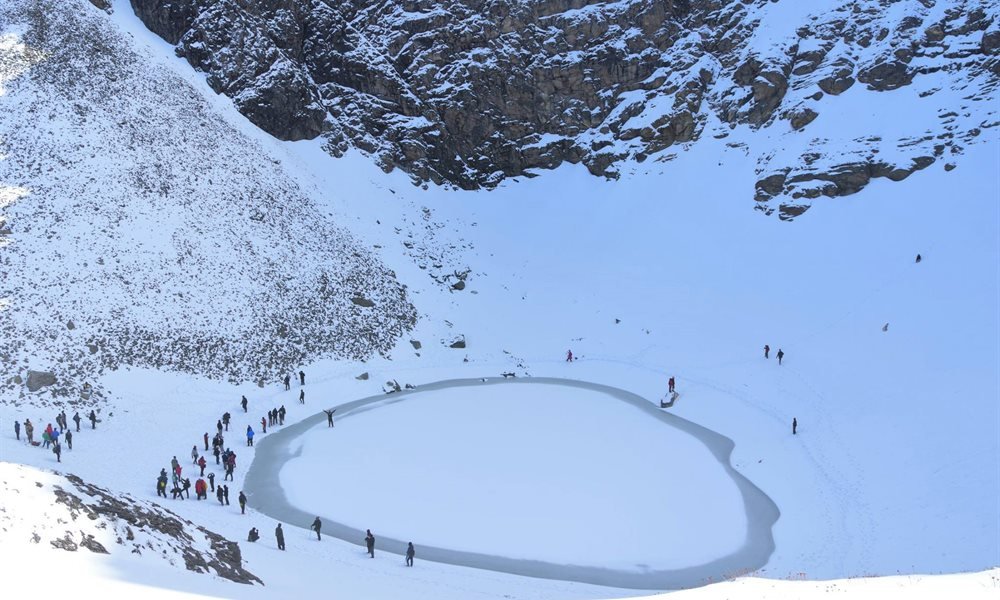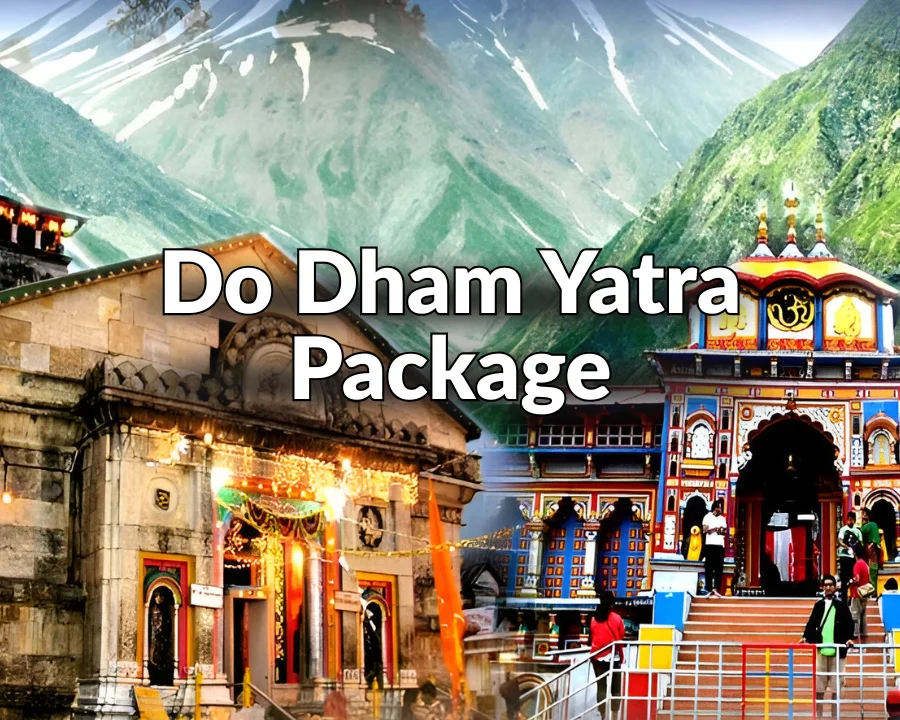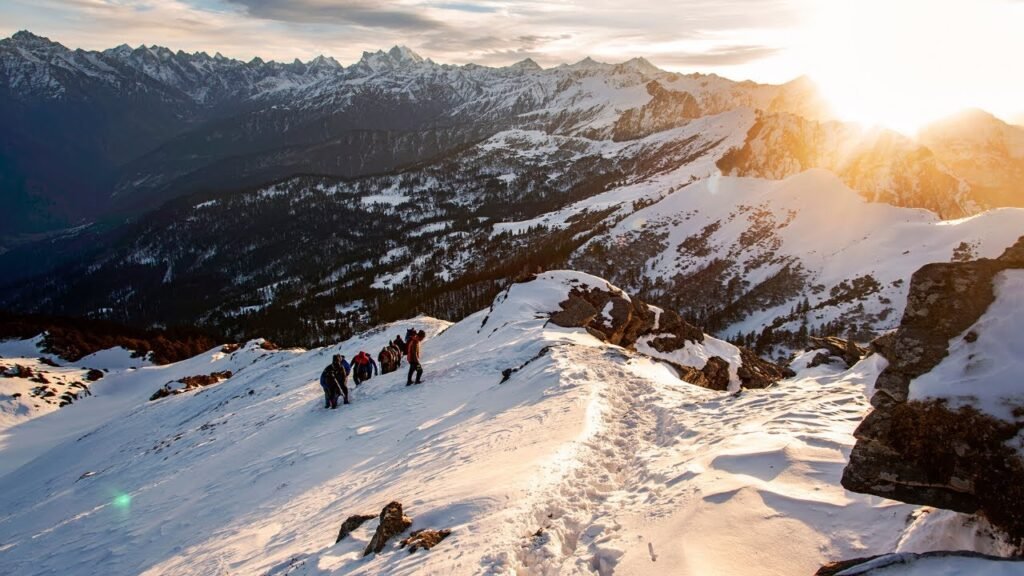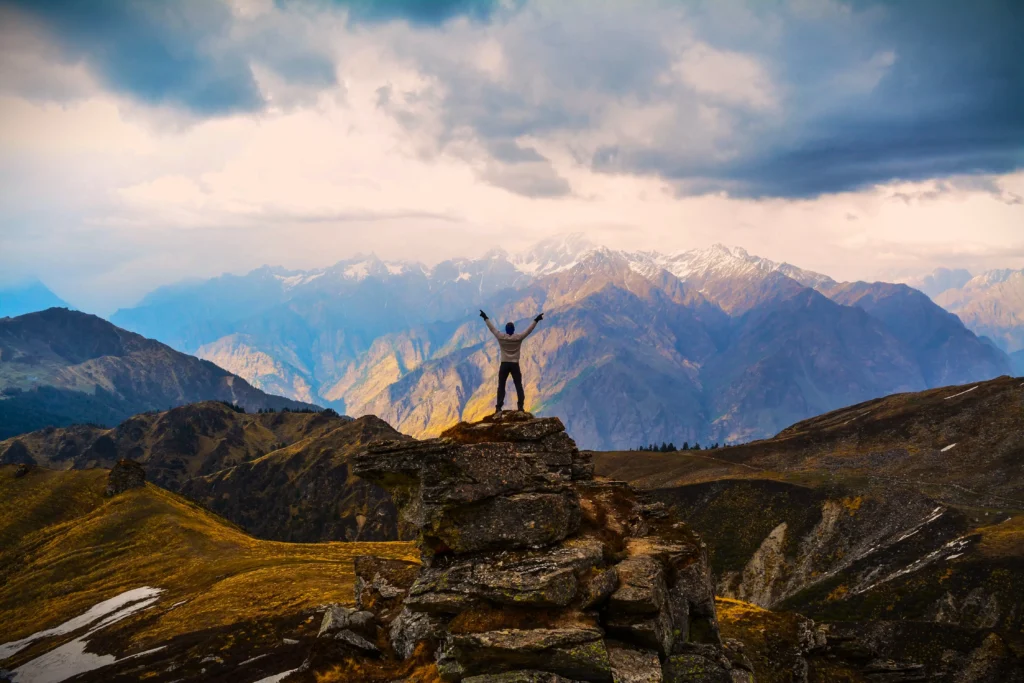
At 16,499 feet, you can breathe in the clean, thin air and see the snow-covered Himalayas all around you. The glaciers made the lake below you, and its secrets have been frozen in ice for hundreds of years. The Roopkund trek isn’t just a dream; it’s a real trip that pushes you to your limits, makes you feel good, and changes how you think about adventure. It’s a challenge for people who want more than just a walk in the mountains and a call to those who love the wild.
If you get scared easily, the Roopkund trek is not for you. It’s a tough journey to a high place that pushes you both physically and mentally. But the prize is worth every drop of sweat and every step that makes you gasp. It’s a story of personal success and going above and beyond what you think you can do to see things that few people will ever see. This guide is like a map for the story. It tells you everything you need to know to win the amazing Skeleton Lake and Himalayan trekking challenges.
What Adventurers Love About Roopkund?
It gives you something to do and a chance to win.
What is it about this Uttarakhand trail that makes so many people from all over the world want to hike it?
It’s the perfect mix of rough, natural beauty and a tough challenge. People who like to get their hearts racing go on the Roopkund adventure as a pilgrimage. The path goes up through thick oak and rhododendron forests and into wide alpine meadows known as Bugyals. From there, it goes up into a beautiful world of rock, ice, and snow that is very different from the one below.
The journey is just as important as the destination. Every day brings new things to see and new problems to solve. You will have to climb steep hills that make your legs hurt, cross huge snowfields that are all white, and sleep under a blanket of stars that are so clear you can almost touch them. The ultimate goal is to get to the famous Roopkund Lake, which is full of mysteries. When the snow melts, you can see the old bones of people. This is a scary and humbling experience that makes you feel like you’re in a story that has been going on for hundreds of years. You will feel great about yourself after this hike, and that feeling will last for a long time.
The best parts of the trek were the snowfields, alpine meadows, and the views from the top.
Each part of the Roopkund trek is more beautiful than the last, just like in a movie. The trail lets you see many of the Himalayas’ beautiful and dramatic features.
Ali and Bedni Bugyal: These big, rolling green carpets are some of the most beautiful meadows in India that are high up. They look great from all sides. On a clear day, the beautiful peaks of Trishul and Nanda Ghunti stand out against the sky. It feels like you’re in a postcard when you camp here.
The Climb to Junargali: The journey doesn’t end at Roopkund for the ultimate thrill-seeker. The climb from the lake to Junargali, the highest point of the trek, is steep and makes your heart race, but it’s worth it. The view from this ridge is great. You can almost reach Trishul, and the sea of peaks around it will stay with you forever.
Crossing the Snow: Depending on the time of year, a lot of the last climb is a real snow trek. It’s fun to learn how to use microspikes and get around on snowy hills. The snow-covered land is quiet, except for the sound of your boots crunching and your breathing. This makes for a relaxing, strong experience.

The Roopkund Trek Route’s schedule, distances, and times
It usually takes eight days for people who are hiking to get used to being at a high altitude.
On the first day, drive 2,300 meters (7,545 feet) from Kathgodam to Lohajung.
The length is 210 km.
Time to drive: 9 to 10 hours
The Kumaon area has a beautiful view that begins the trip. The winding roads give you a taste of the adventure to come.
Day 2: Hike from Lohajung to Didna Village, which is 8,040 feet (2,450 m) above sea level.
Length: 6.5 km
Four to five hours
The hike begins with a drop to the Neel Ganga River and then a steady climb through oak forests to the lovely Didna Village.
On the third day, you’ll walk 10.5 kilometers (3,400 meters or 11,155 feet) from Didna to Ali Bugyal.
Length: 6 to 7 hours
Ali Bugyal is one of the biggest meadows in Asia. It’s a tough day with a steep climb through dense woods.
Day 4: Walk 5 km (3,700 m / 12,140 ft) from Ali Bugyal to Patar Nachauni through Bedni Bugyal.
Three to four hours
A nice, easy walk through the meadows that connect Ali and Bedni Bugyal. You can always see Trishul and Nanda Ghunti. It’s a short day to help you get used to it.
Day 5: Walk 4,400 meters (14,435 feet) from Patar Nachauni to Bhagwabasa.
4 kilometers away and 4 to 5 hours long
As you climb up to Kalu Vinayak, a small temple on the ridge, the land changes. From here, the path slowly goes down to the Bhagwabasa campsite. This is a rocky and bare base for the climb to the top.
Day 6: Hike to Roopkund Lake (4,800m / 15,750 ft), then climb to Junargali and back to Patar Nachauni.
10 km away
8 to 9 hours
The day of the meeting. You start your trip early in the morning on steep, snowy ground that takes you to the beautiful Roopkund Lake. You go back down to Patar Nachauni to get some much-needed rest after taking it all in.
Day 7: Walk from Lohajung to Patar Nachauni
Length: 13 km Duration: 6 to 7 hours
I felt good about myself as I walked back down through the fields and woods.
Day 8: Drive from Kathgodam to Lohajung
The ride back was full of stories and memories from an amazing hike in the Himalayas.
To get your body ready, you need to get in shape, get used to the weather, and get your mind ready.
Getting ready is the most important thing you can do to do well on the Roopkund trek. This hike is hard, and you shouldn’t underestimate how hard it is to walk on rough ground and at high altitudes.
Heart health: Your heart and lungs will have to work harder in the thin mountain air. To get stronger, do things like swim, bike, or run. You should be able to run 5 kilometers in 30 to 35 minutes. You have to do cardio every day for at least two months before the hike.
Strength training: Having strong legs will help you the most when you go up steep hills and down long ones. Do calf raises, lunges, and squats. You should do core exercises like planks every day. A strong core will help you stay steady and balanced. It’s also a good idea to bring a backpack when you practice hiking.

Getting used to it is the most important thing you can do to stay safe while hiking at a high altitude.
The schedule is set up so that your body can slowly get used to having less oxygen. Listen to your body and walk slowly and steadily. “Climb high, sleep low,” and drink a lot of water (4 to 5 liters a day).
It’s just as important to be mentally ready as it is to be physically fit. You might feel tired and uncomfortable at times. Be ready to deal with them. Think about how great it will feel to win, look at the beautiful scenery, and remember why you wanted to do this.
Gear and Tools: Things You Need for Snow, Cold, and High Altitude
You have to bring the right things. You’re in danger if you’re not ready for the cold and snow.
Things you need to go trekking: You need a 50- to 60-liter backpack with a rain cover, trekking poles to help you stay steady, and a headlamp.
Shoes: The most important piece of gear you have is a pair of high-ankle trekking boots that are waterproof and have good grip. Make sure they are well worn in. You will also need microspikes to walk on ice and snow.
Clothes (Layering System):
Base Layer: Tops and bottoms made of synthetic or merino wool that wick away sweat.
Mid Layer: Fleece jackets to keep you warm.
Outer Layer: A down or synthetic insulated jacket will keep you warm at campsites, and a jacket and pants that are waterproof and windproof will keep you safe from the weather.
You need woolen caps, sun hats, balaclavas, neck gaiters, and gloves that keep water out to stay warm and safe from the sun. You need to wear sunglasses in the snow so you don’t go blind. Put on a lot of sunscreen.
Your own medical kit: Include your own medicines and prescriptions for headaches, fevers, stomach problems, and other issues. You also need antiseptic wipes, blister tape, and band-aids.
Weather: Issues and safety tips for all seasons
The Roopkund trek is open from May to June (before the monsoon) and from September to October (after the monsoon).
There are different seasons.
If you want to go snow trekking in Roopkund, the best time to go is in May or June. There will probably be snow on the way to the lake, which will make it more fun. The weather is mostly nice, but it could rain later in the day.
From September to October: The Bugyals are now fully visible in their green glory because the snow has melted from the lower levels. The peaks look sharp and beautiful after the monsoon, when the sky is usually clearer. But it gets a lot colder, especially at night.
It’s always hard to guess what the weather will be like in the mountains, no matter what time of year it is. Be ready for the weather to change quickly, with rain or even snow.
How to be safe when you have altitude sickness, slippery trails, or an emergency
You should always put your safety first.
You could really get Acute Mountain Sickness (AMS). Headaches, nausea, dizziness, and tiredness are some of the signs.
Don’t drink alcohol, go up slowly, and drink a lot of water to avoid this.
Don’t go any higher if you have symptoms. Tell your trek leader right away. The only way to get better is to go down.
How to Move Around on Trails: The path can be rough, bumpy, and slippery, especially when it rains or snows.
Trekking poles can help you keep your balance. Stay far enough away from the person in front of you. When you walk on hard surfaces, be careful and take your time.
Emergency Plan: When you go hiking, always take a guide who is trained and has experience. They should have a first-aid kit, oxygen tanks, and a way to talk to other people. For sure, do what they say.
How to Get Over Fear, Become a Better Person, and Reach Your Goals Through Trekking Emotions
The Roopkund trek is like a rollercoaster ride of feelings! One minute you can be really excited, and the next you can be really tired or scared. When you climb the steep hills, your legs hurt, but it’s also fun and thrilling. It feels like you’re in a dream when the sun rises over the snowy mountains. At night, it’s nice to sit in a cold tent and tell stories with your new friends. You don’t just walk on this trek; you also get braver, stronger, and happier as you go. There will be times when you doubt yourself and are scared, and you will wonder if you can keep going.
You really grow when you get through these times. When you push yourself past your physical and mental limits, you gain a certain kind of confidence. You won’t be afraid of heights if you know you can stand on a narrow ridge. When you see a view that takes your breath away, you forget how tired you are. Standing at the edge of Roopkund Lake marks the end of this journey, a moment of pure, untainted success. You come as a hiker, but when you leave, you’re stronger and more resilient.

Questions and Answers for People Who Like to Have Fun
- Is the Roopkund trek a good place for people who are new to trekking?
No. The days are long and the altitude is high, so this is a hard trek. It is best for people who are in good shape and have done a lot of high-altitude trekking before. - What is the secret of Skeleton Lake?
There are hundreds of human bones in Roopkund Lake. Researchers believe that these people were pilgrims who died in a terrible hailstorm in the 9th century. - Is the Roopkund trek open right now?
The Uttarakhand High Court has limited the Roopkund trek to protect the delicate ecosystems of the meadows. Before you make plans for your trip, you should check the most recent official rules and permissions. A lot of trekking companies have different routes in the same area that go through the stunning Ali and Bedni Bugyals. - What kinds of food and places to stay can I look forward to?
You will share a tent with someone else and eat simple, healthy vegetarian food. - How cold does it get?
The temperature can drop to -5°C to -10°C at night at the higher campsites, especially after the monsoon season. You should wear the right layers and have a good sleeping bag.
The Roopkund trek is more than just a path; it’s a test for real adventurers. It’s a call to leave your comfort zone and enter a world of breathtaking, unfiltered beauty. It’s a chance to see how far you can go and find a strength you didn’t know you had. Let’s take on the challenge because the mountains are calling. Contact us for becoming our trekking partner.
If you loved reading about this trek you might also like Bramhtal Trek.




